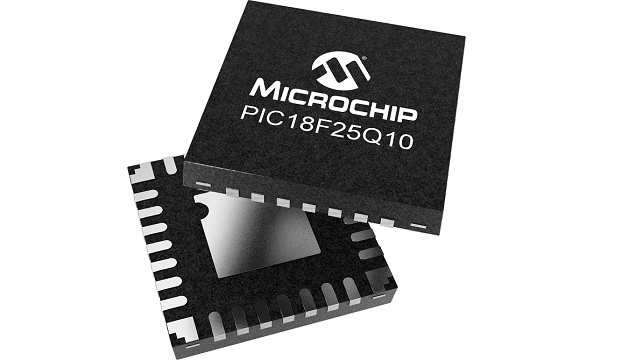From pool pumps to air handling units, closed-loop control is one of the most fundamental tasks performed by embedded systems. Advancements in the architecture of PIC and AVR 8-bit microcontrollers (MCUs) have optimised the devices for implementing closed-loop control, enabling systems to offload the Central Processing Unit (CPU) to manage more tasks and save power. To help designers maximise performance and efficiency in these systems, Microchip Technology Inc. has introduced the new PIC18 Q10 and ATtiny1607 families, featuring multiple intelligent Core Independent Peripherals (CIPs) that simplify development and enable quick response time to system events.
Ideal for applications that use closed-loop control, a key advantage of using the PIC18 Q10 and ATtiny1607 MCUs are the CIPs that independently manage tasks and reduce the amount of processing required from the CPU. System designers can also save time and simplify design efforts with the hardware-based CIPs, which significantly reduce the amount of software required to write and validate. Both families have features for functional safety and operate up to 5V, increasing noise immunity and providing compatibility with the majority of analog output and digital sensors.
Offered in a compact 3 x 3 mm 20-pin QFN package, the new ATtiny1607 family is optimised for space-constrained closed-loop control systems such as hand-held power tools and remote controls. In addition to the integrated high-speed Analog-to-Digital Converter (ADC) that provides faster conversion of analog signals resulting in deterministic system response, the devices provide improved oscillator accuracy, allowing designers to reduce external components and save costs. Among CIPs in the PIC18 Q10 family are the Complementary Waveform Generator (CWG) peripheral, which simplifies complex switching designs, and an integrated Analog-to-Digital Converter with Computation (ADC2) that performs advanced calculations and filtering of data in hardware without any intervention from the core. CIPs such as these allow the CPU to execute more complex tasks, such as Human Machine Interface (HMI) controls, and remain in a low-power mode to conserve power until processing is required.
“We continue to see increased demand for flexible PIC and AVR microcontrollers in all kinds of embedded control applications,” said Steve Drehobl, vice president of Microchip’s 8-bit MCU business unit. “By focusing on the challenges faced by closed-loop control system designers, we’ve been able to offer them unprecedented ease of use and performance with the PIC18 Q10 and ATtiny1607 families.”
Development Tools
All PIC18 Q10 products are supported by MPLAB Code Configurator (MCC), a free software plug-in that provides a graphical interface to easily configure peripherals and functions. MCC is incorporated into Microchip’s downloadable MPLAB X Integrated Development Environment (IDE) and the cloud-based MPLAB Xpress IDE, eliminating the need to download software. The Curiosity High Pin Count (HPC) development board (DM164136), a fully-integrated, feature-rich rapid prototyping board, can also be used to start development with these MCUs.
Rapid prototyping with the ATtiny1607 family is supported by ATmega4809 Xplained Pro (ATmega4809-XPRO) evaluation kit. The USB-powered kit features touch buttons, LEDs and extension headers for quick setup as well as an on-board programmer/debugger that seamlessly integrates with the Atmel Studio 7 Integrated Development Environment (IDE) and Atmel START, a free online tool to configure peripherals and software that accelerates development.
Availability
The PIC18 Q10 and ATtiny1607 are available today for sampling and in volume production.

